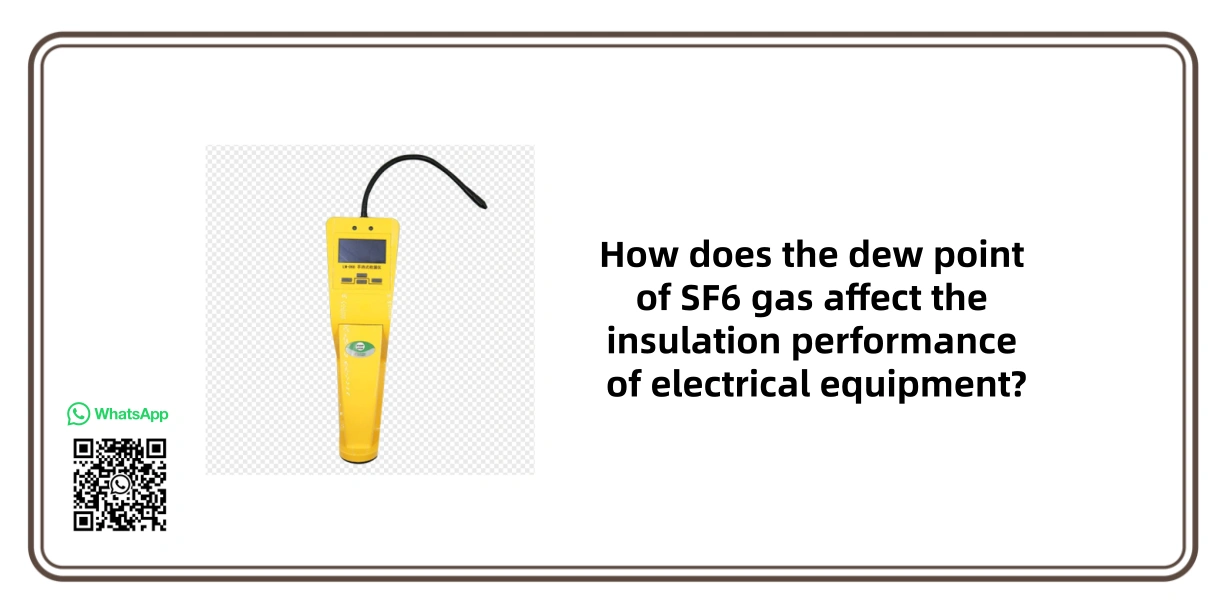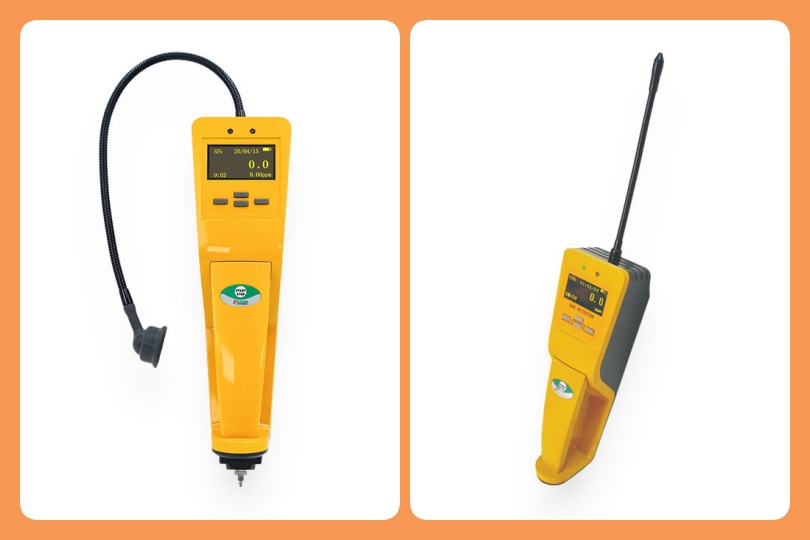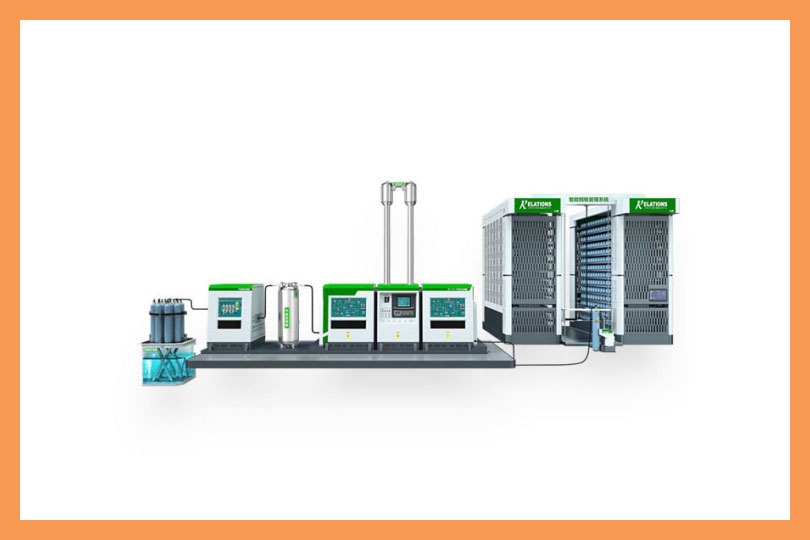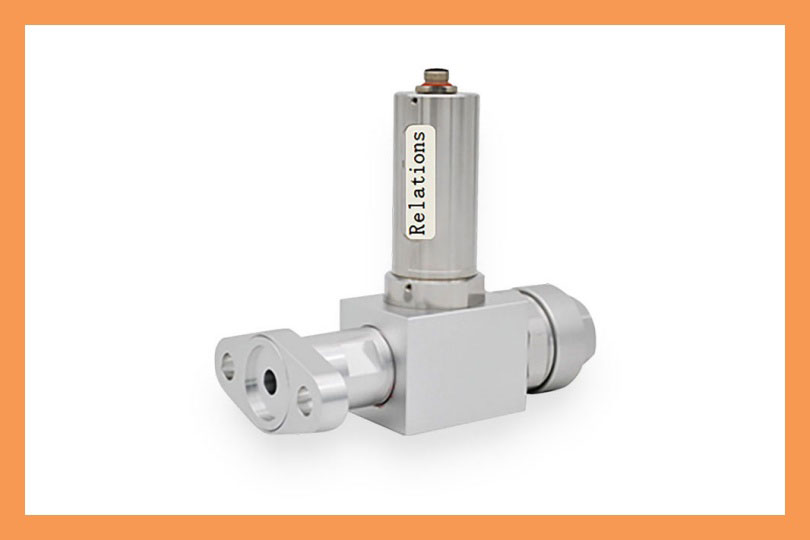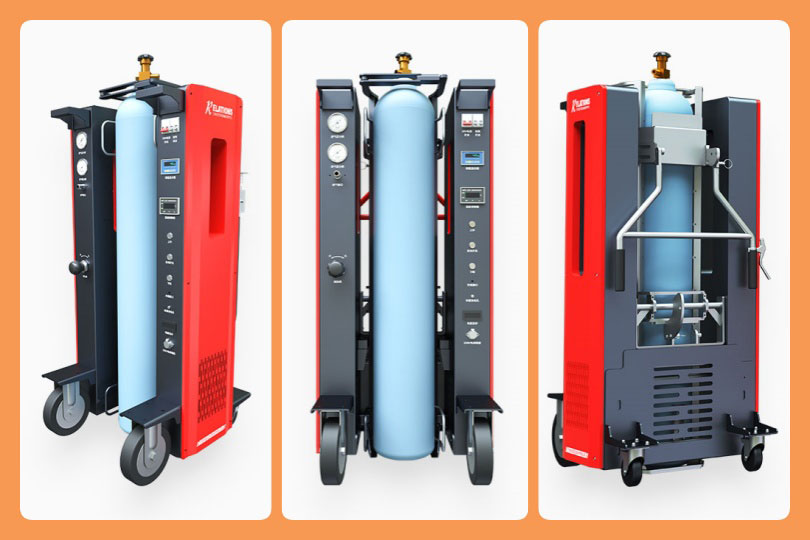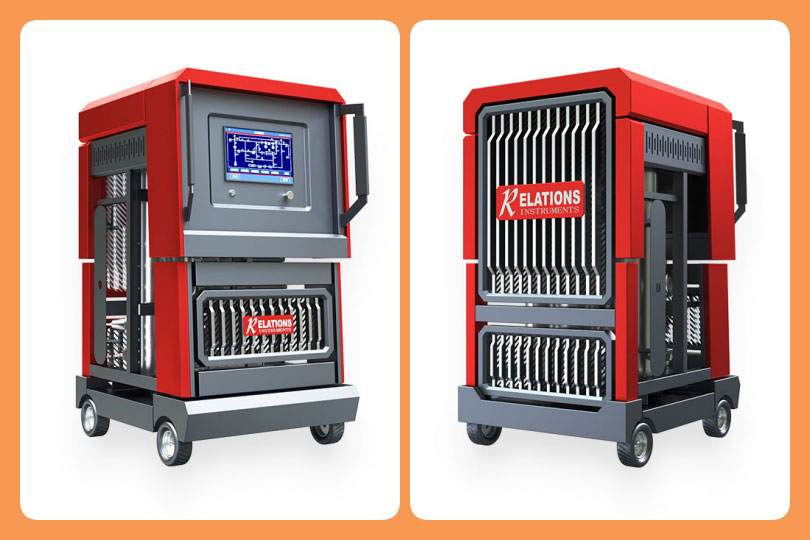Need Help: Providing Innovative and Sustainable Solutions.
Office Hours: 08:30am-6:00pm
How does the dew point of SF6 gas affect the insulation performance of electrical equipment?
Date
2025-10-24
[email protected]
Website
www.sf6gasdetector.com
Get Solutions And Quotes
How does the dew point of SF6 gas affect the insulation performance of electrical equipment?
The dew point of SF6 gas directly determines its moisture content, and excessive moisture (reflected by a high dew point) severely degrades the insulation performance of electrical equipment—this is because moisture weakens SF6’s dielectric strength, generates conductive byproducts, and damages solid insulation materials, ultimately increasing the risk of electrical breakdown.
1. High Dew Point Reduces SF6’s Dielectric Strength (Core Insulation Capacity)
SF6 gas relies on its excellent dielectric strength (ability to resist electrical breakdown) to insulate high-voltage components in equipment like GIS. Moisture directly undermines this core capability.
- Moisture promotes ionization under electrical stress: Water molecules in SF6 are more likely to ionize when exposed to high voltage than pure SF6 molecules. Ionized water vapor forms free electrons and charged particles, creating “conductive paths” in the gas.
- Condensed moisture worsens the problem: If the dew point is too high (e.g., above -40°C for operating GIS), water vapor in SF6 condenses into liquid water or ice on cold equipment surfaces (such as insulating sleeves). Liquid water is a conductor, and even a thin layer can drastically reduce the insulation gap’s ability to resist voltage—leading to partial discharges (localized electrical breakdowns) or full short circuits.
- Quantifiable impact: Studies show that when SF6’s dew point rises from -50°C to -20°C (a typical “excessive moisture” scenario), its dielectric strength can drop by 30%–50%, making the equipment vulnerable to breakdown even at rated voltage.
2. High Dew Point Triggers Formation of Conductive/Corrosive Byproducts
Moisture reacts chemically with SF6 under electrical stress, producing substances that further damage insulation performance.
- Reaction mechanism: SF6 decomposes into sulfur fluorides (e.g., SF4, SF2) under high voltage; these compounds then react with moisture (H₂O) to form hydrogen fluoride (HF), sulfur dioxide (SO₂), and other acidic byproducts.
- Impact on insulation:
- HF and SO₂ are both low-resistance substances—they attach to the surface of solid insulators (e.g., epoxy resin, ceramic sleeves) and form a conductive film, reducing the insulator’s surface resistance.
- Over time, this film allows leakage current to flow, heating the insulator and accelerating its aging (e.g., cracking, peeling), which further weakens insulation.
3. High Dew Point Degrades Solid Insulation Materials
Electrical equipment (like GIS) uses solid insulators (e.g., epoxy bushings, insulating spacers) alongside SF6 gas. Moisture and its byproducts directly erode these solid materials, breaking down the overall insulation system.
- Corrosion of solid insulators: HF (a strong acid) reacts with the silica, resin, or metal components in solid insulators. For example, it dissolves the silica in epoxy resin, creating microcracks on the insulator surface.
- Reduced insulation resistance: These cracks and surface erosion provide paths for electrical leakage. The insulator’s volume resistance (a key indicator of insulation performance) can drop by 1–2 orders of magnitude, making it unable to block high voltage effectively.
- Long-term failure risk: Degraded solid insulators are prone to “flashover” (surface electrical breakdown) during voltage fluctuations (e.g., lightning strikes or grid surges), leading to unplanned equipment shutdowns.
Practical Standard: Why Dew Point Limits Are Mandated
To prevent these insulation failures, global standards explicitly specify SF6 dew point limits for electrical equipment:
- IEC 60480: Requires a dew point of ≤ -40°C for SF6 in operating GIS (and ≤ -50°C for new equipment before commissioning).
- IEEE 1125: mandates regular dew point testing to ensure moisture levels stay within safe ranges, as part of GIS maintenance.
These limits are designed to keep SF6’s moisture content low enough to maintain its dielectric strength, avoid byproduct formation, and protect solid insulation.
Realize The Recycling Of Sf6 Gas
